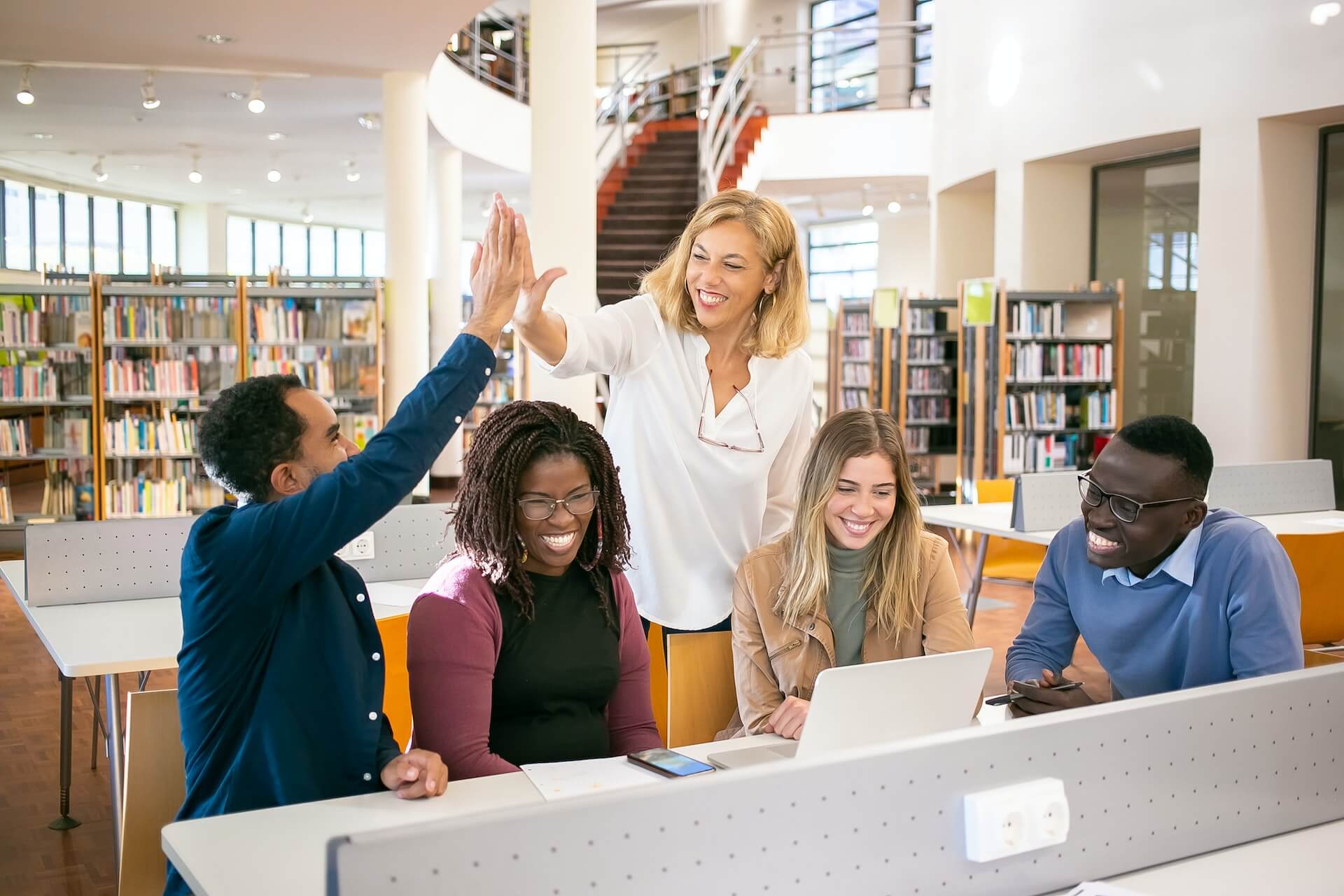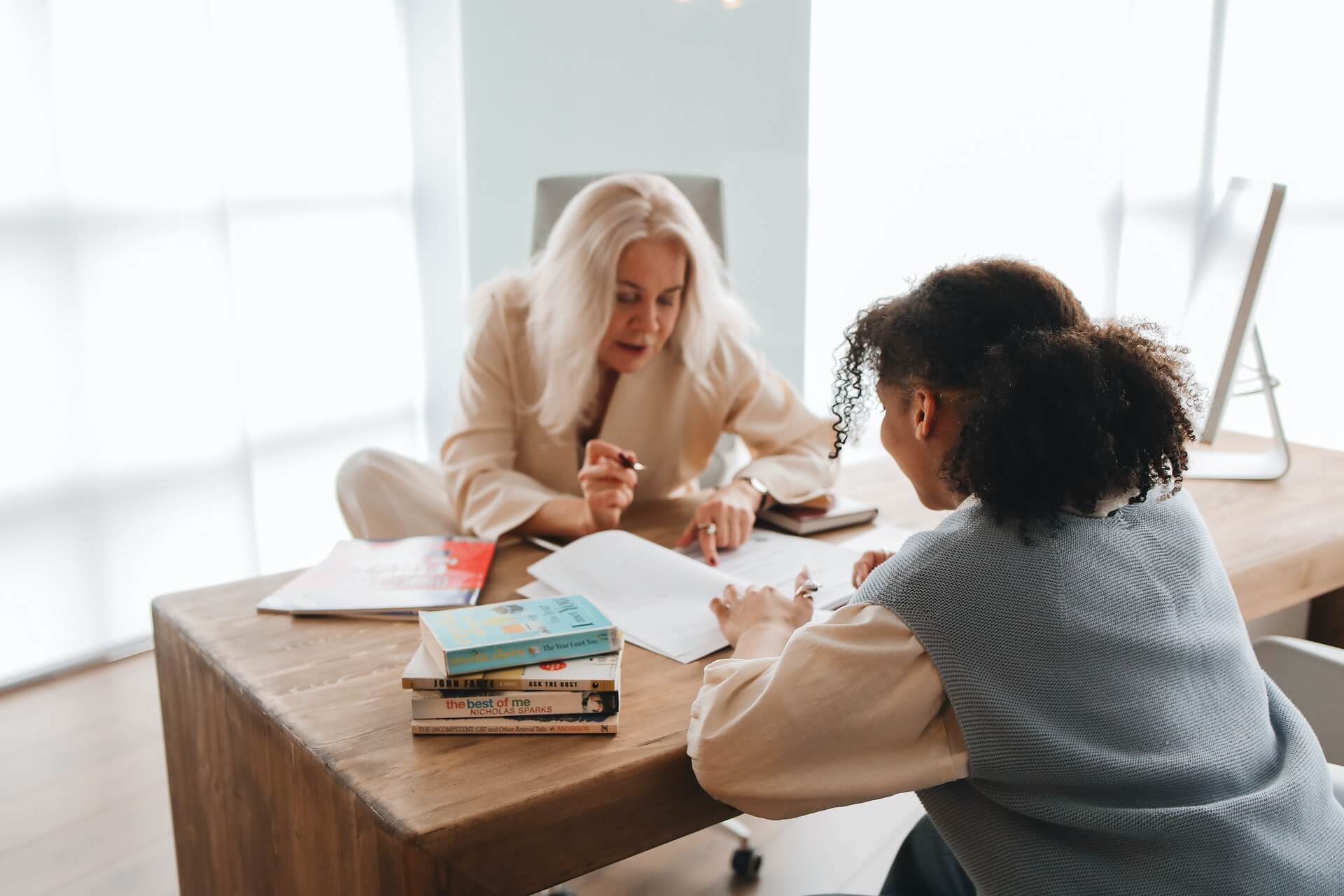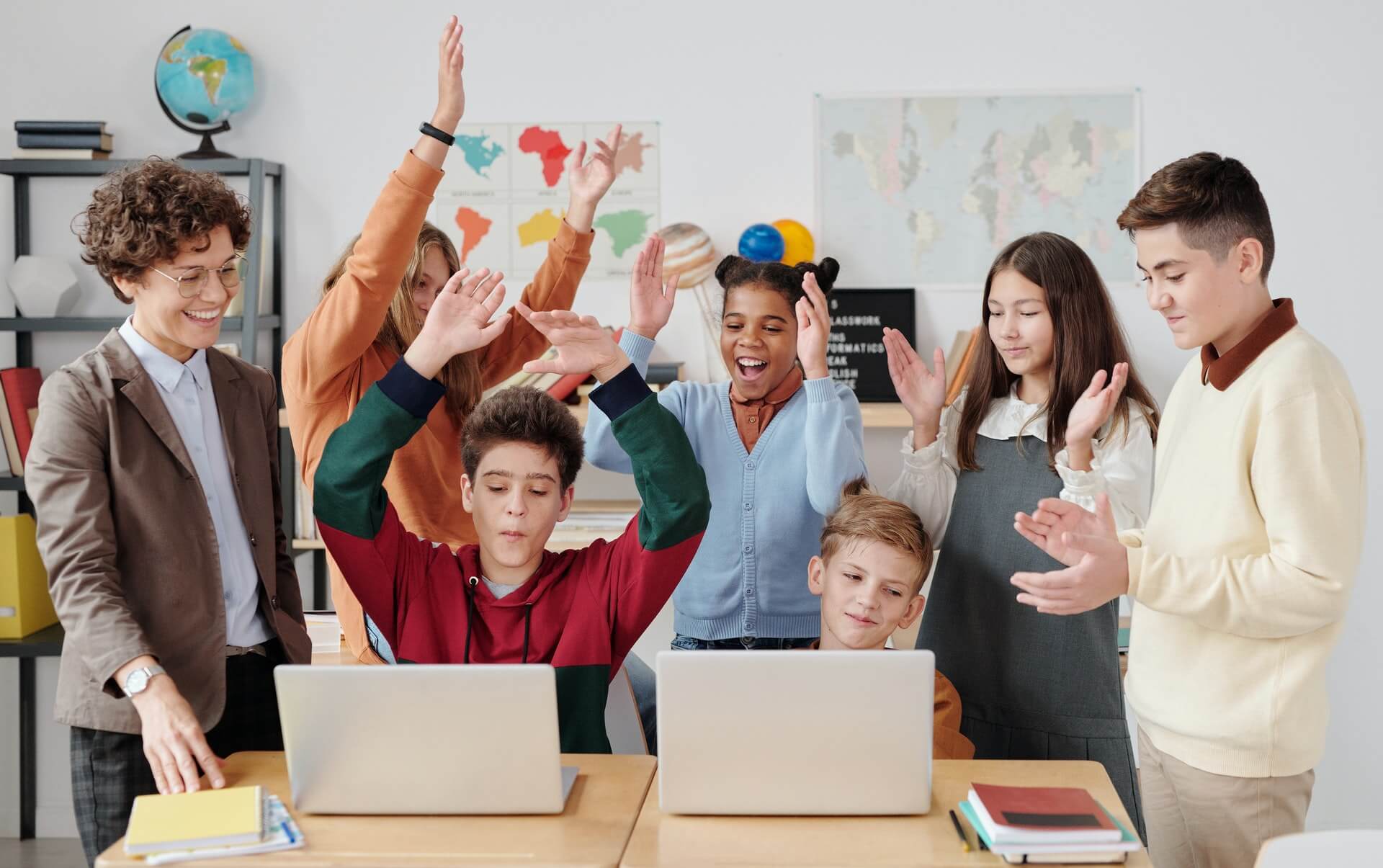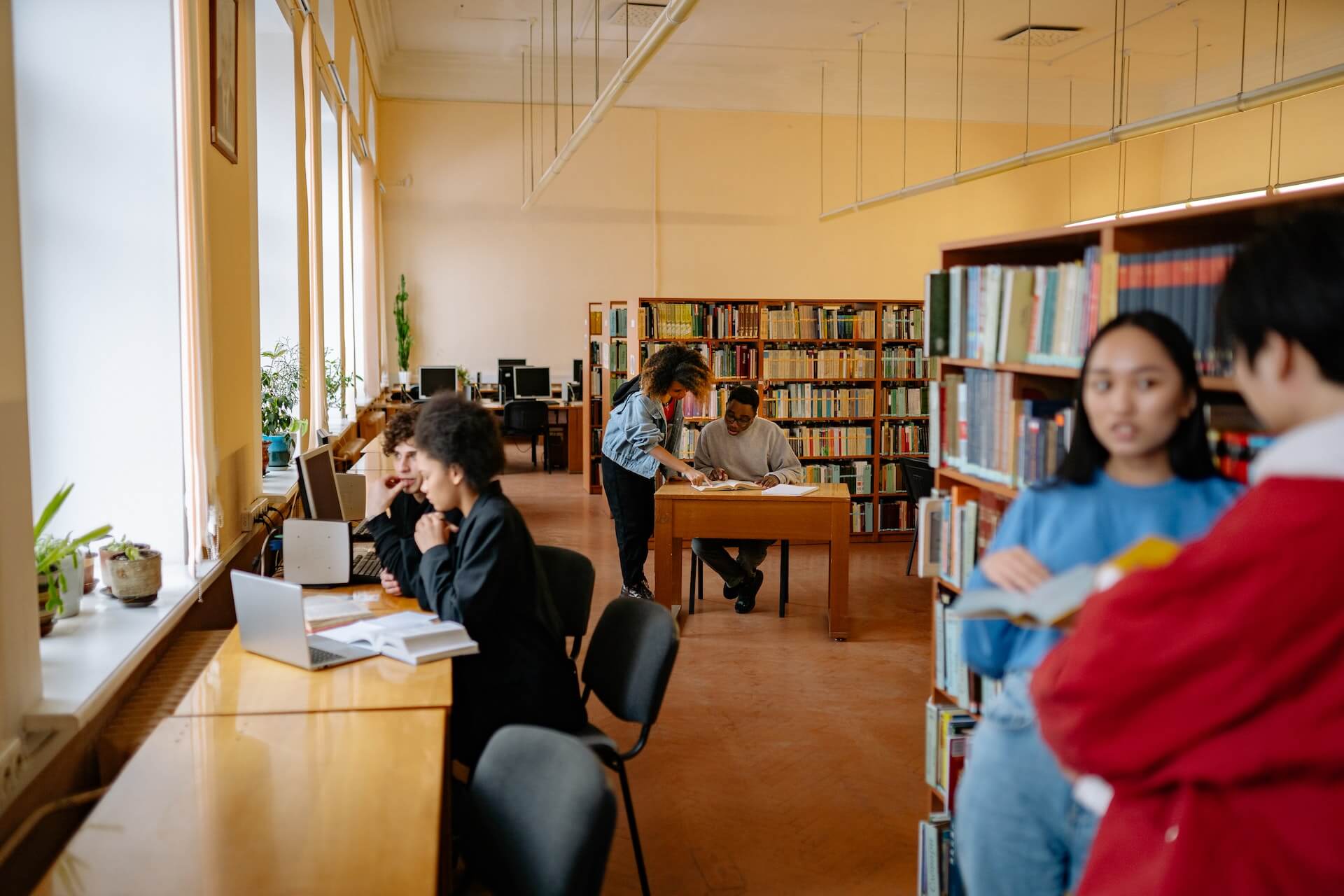Fostering Stronger Teacher-Student Collaboration
Enter a classroom at Purdue Polytechnic High School—an XQ school in Indianapolis, IN—at the start…

Enter a classroom at Purdue Polytechnic High School—an XQ school in Indianapolis, IN—at the start of the school day, and you might initially have trouble locating the teacher.
Instead of rows of students receiving directions from an instructor, you’ll see students working individually to set their goals and plan for the school day. This time is called “Personal Learning Community, a staple of PPHS’s design. With the support of their “coaches”—PPHS’s name for teachers—students begin the day deciding how and where they’ll spend their time to support their learning.
Personalized Learning Communities (PLCs) are a powerful example of teacher-student collaboration: students and teachers work together to create meaningful learning experiences. By emphasizing real collaboration between teachers and students, PPHS educators create a culture of support and student agency.
This culture supports PPHS’s ultimate mission to prepare students for success after high school. Through teacher-student collaboration, students learn how to take initiative and direction to accomplish their goals. “I really like the freedom they give us,” PPHS student Jeremiah explained. “This is how we are expected to get work done in real life.”
What is teacher-student collaboration?
Teacher-student collaboration is the process of sharing responsibility for the shape, direction, and outcomes of a student’s educational experience between students and teachers. This productive collaboration gives students a voice, provides them with opportunities for problem-solving, and makes them active participants in their education.
By definition, teacher-student collaboration is student-centered. Students have a say in what, when, and how they learn. Instead of acting as knowledge-dispensers or top-down directors, teachers act as coaches, guides, and resources to support student learning. This shift in traditional roles allows students to act as leaders and decision-makers in their own education, and enables effective learning.
What does this collaboration feel like to students? Jada Johnson, a student at Brooklyn Laboratory High School, an XQ school in Brooklyn, NY, summed up her experience of teacher-student collaboration: “Teachers viewed scholars as more than students. … We were treated as individuals with our own ideas and viewpoints, and those were incorporated into classes and school governance. Brooklyn Lab gave me the strength to use my voice. Now, I’m not afraid to stand up and speak my opinion.”

Why is teacher-student collaboration important?
Neuroscience research shows that the way students learn in high school has a profound impact on who they are as adults. Because of this, the high school years encompass a time of opportunity to empower students with the skills and knowledge to pursue the lives they want to lead after graduating.
At XQ, we define these skills and knowledge areas through the XQ Learner Outcomes. These outcomes include:
- Masters of All Fundamental Literacies
- Holders of Foundational Knowledge
- Original Thinkers for an Uncertain World
- Generous Collaborators
- Learners for Life
Teacher-student collaboration supports these outcomes by engaging students in their learning. Students learn to collaborate through working with their teachers to create their own learning paths, a process that also prepares them to continue their own learning after high school. By focusing their learning around their passions, students gain a deeper relationship with the material, in terms of knowledge and academic literacy. And making critical decisions about their learning path equips students as original, interdisciplinary thinkers.
These results of teacher-student collaboration are borne out in students’ experiences at XQ schools. Read on to see how educators at these schools foster effective learning through real collaboration with students, and how doing so empowers students to be their best.
How does collaboration affect student performance?
Students learn and perform best when they experience meaningful, engaged learning: learning experiences that provide appropriate challenge, relevance, and connection to students’ interests. Teacher-student collaboration provides these effective learning experiences and bolsters student achievment by centering student passion and putting students in the driver’s seat.
At Iowa BIG—an XQ school in Cedar Rapids, IA—teachers and students collaborate on meaningful work through project-based learning. Students learn through working on real-world projects, or “initiatives” that address authentic challenges. These initiatives engage students in productive collaboration at every level. Students can propose their own initiatives, and they work with teachers and community partners to design the projects around rigorous academic standards. Students also get to choose which initiative they’d like to work on based on their passion.
Former Iowa BIG student Jemar spoke to nonprofit Education Reimaged to describe the impact of this collaborative environment on his academic performance. For years, Jemar struggled within traditional school systems where he felt like he had no role in shaping his own learning. When Jemar got to Iowa BIG, the shift was dramatic. Passionate about architecture, Jemar proposed a floor plan for a brand new space at Iowa BIG—and his design was accepted. Having the ability to work with teachers on this project learning transformed Jemar’s relationship to school and academics. He explained, “I went from dreading any type of school work to working on two passion projects I would have never had the opportunity to pursue in my traditional education environment.”
To follow in Iowa BIG’s example to create meaningful, collaborative learning experiences that support student achievement, educators can:
- Give students choice in which projects they pursue
- Seek out community partnerships at organizations that connect to your students’ passions
- Include students in the design of projects and assignments

How can collaboration affect self-determination skills?
Self-determination is the ability of individuals to set and pursue their own goals for themselves. It’s the idea behind the XQ Design Principle Youth Voice and Choice: all students should have the capacity to define their own passions and lead their own learning journeys.
Effective collaboration between teachers and students encourages self-determination by giving students a say in how they learn. In collaborative relationships, teachers don’t tell students what they need, or exactly how they should go about accomplishing their goals. Instead, educators invite students to explore those questions for themselves.
Crosstown High—an XQ school in Memphis, TN—embodies this commitment to self-determination through collaboration. Crosstown is a “diverse-by-design” school with the explicit mission of helping students figure out who they are and who they want to be in the context of their community. One concrete way Crosstown High does this is through competency-based education. In competency-based education, students progress through material based on mastery of Crosstown’s core competencies, not time spent in seats.
This means that students move at their own pace, and take an active role in leading their own learning. Teachers help guide learning and connect students with knowledge and resources, but students share responsibility in evaluating their progress and figuring out what they need to move forward. And they do so through projects that relate to their passions—like designing virtual reality experiences, facilitating a young-voter registration campaign, and designing sustainable shoes.
Crosstown High student Vera explained how this approach encourages self-determination: “It forces you to learn more about yourself and learn what’s best for me and ask myself what environments do I learn best in. Leading your own learning—that’s very difficult.”
Educators can follow Crosstown’s collaborative, competency-based example:
- Define core learning goals, or competencies, in agreement with students
- Allow for self-paced work within the classroom
- Create opportunities for students to self-evaluate their work
How can collaboration lead to better interpersonal skills?
As the name implies, teacher-student collaboration teaches students how to work with others, bolstering students’ interpersonal skills. Specifically, teacher-student collaboration fosters caring, trusting relationships by inviting students to bring their whole selves into the classroom.
This emphasis on building interpersonal skills and relationships through effective collaboration is apparent at Círculos, an XQ school in Santa Ana, CA. Relationships are central to Círculos’s model, which aims to empower students through a tight-knit, collaborative community of teachers, students, and community members. At a structural level, Círculos educators encourage collaboration through their use of circles as a pedagogical tool.
Students at Círculos begin each day in circles, where they define and share their goals, successes, and setbacks. Teachers also use circles in academic settings, to foster Socratic-style discussions in which students drive the conversation. This classroom format allows discussions to be truly collaborative: instead of one teacher deciding what the class focuses energy on, students get to center their own ideas, ask questions of each other, and work together to direct the conversation. This collaborative discussion format bolsters students’ interpersonal communication skills—not just with their teachers, but with each other.
To encourage interpersonal skills through collaboration, teachers can:
- Create opening classroom rituals where students share their learning goals for the day
- Pair students together so that students can teach each other
- Let students sign up to lead classroom discussions

How can collaboration encourage better teaching?
Traditional models of teaching, where educators serve as knowledge-dispensers, don’t always leave room for teachers to truly center students. By collaborating with students and giving students a say in what and how they learn, teachers can implement more culturally responsive practices, where learning experiences relate to students’ specific needs, identities, and life experiences.
Teacher-student collaboration also promotes equity in the classroom. Equity in education means every student gets what they need to succeed—and no one knows what students need better than students themselves. Washington Leadership Academy—an XQ school in Washington. D.C.—embodies this approach.
WLA’s mission is to empower their students, 95% of whom are Black and 75% of whom receive free-and-reduced lunch, to thrive in the world and become change makers in their communities. To do this, educators and school leaders give students significant say in making decisions about what they need. Students weigh in on decisions like the school budget. They run the front desk. They collaborate with educators on community-building structures, and they implement restorative practices.
Co-founder and director Stacy Kane explained how collaborating with students to make decisions about the school creates a culture of equity and empowerment. “Everything over the years, all we’ve been through from the beginning, led us to this realization that students actually need to own, lead, and run everything,” Kane said. “We’ve really underestimated as a society what teenagers are capable of, but letting students lead has to be the new norm and not the exception. It’s the only way to get to a truly liberatory, powerful learning environment for all our young people.”
For more on how teachers and school leaders can emphasize equity through centering students, explore our resource, Equity in the High School Classroom: A Teacher’s Guide.
Teacher-student collaboration for a productive classroom environment
To create transformative high school experiences, students and teachers need to work together. Teacher-student collaboration cultivates learning environments where students lead their own learning and teachers have the tools to empower students with what they need. Follow our work for more on how to transform high school through centering students.









